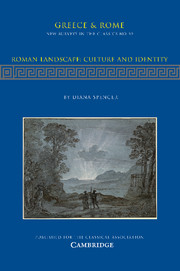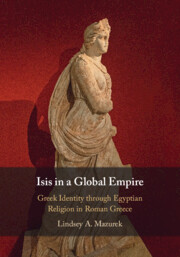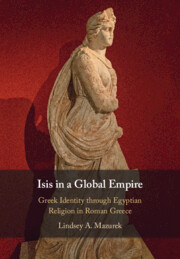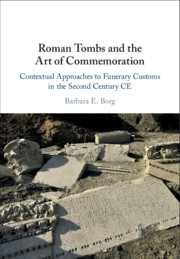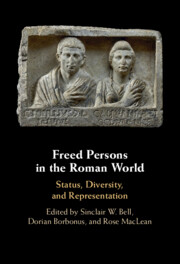Roman Landscape: Culture and Identity
This book tackles how and why 'landscape' (farms, gardens, countryside) set the scene in the first centuries BCE and CE for Romans keen to talk up and about (but also to scrutinize and understand) what it meant to be a citizen. It investigates what 'landscape' means now and reflects upon how contemporary approaches to 'landscape' can enrich our understanding of ancient experience of the interface between natural and artificial space. It encourages examination of 'landscape' from a range of angles, suggesting alternative ways of thinking about what landscape represents. These methodological approaches (presented initially via a set of key terms and definitions and then deployed thematically across four chapters), combined with a detailed interdisciplinary bibliography and a series of case studies of literary texts and material sites, enable readers to use this survey as a starting point for developing their own in-depth study.
- Alphabetical list of important critical theory/methodological terms with succinct definitions presented right at the beginning for easy access, with chapter of first use indicated, plus instance of first use highlighted in relevant chapter
- Famous real world examples discussed, including Hadrian's Villa, Porticus of Pompey and the Gardens of Sallust
- Extensive bibliography and guidance on key scholarship
Product details
February 2011Paperback
9781107400245
256 pages
235 × 155 × 11 mm
0.38kg
Available
Table of Contents
- 1. Introduction: surveying the scene
- 2. Landscape and aesthetics
- 3. Those happy fields: aborious landscapes and DIY self-help
- 4. Landscape: time and motion
- 5. Italy and the villa estate, or, of cabbages and kings
- 5.1. Philosophical landscapes: Cicero, loca, and imagines
- 5.2. Varro's exopolis: landscape and Italy
- 5.3. Columella: landscape and the body of history
- 5.4. Statius, landscape, and autarky: between authenticity and delight
- 5.5. Ekphrasis: Pliny's artful landscapes
- 6. Spaces and Places
- 6.1. Landscape as background and foreground
- 6.2. Landscape and scale: gardens
- 6.3. Imagined landscapes: the Villa 'Farnesina'
- 6.4. Total immersion: Livia's garden room (Villa ad Gallinas Albas, Prima Porta)
- 6.5. Landscapes encircling the city: the Horti Sallustiani and Porticus of Pompey
- Envoi. Getting (away from) it all at Hadrian's villa
- Bibliography
- Webography.

